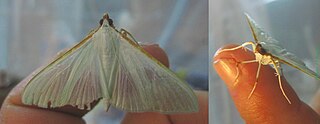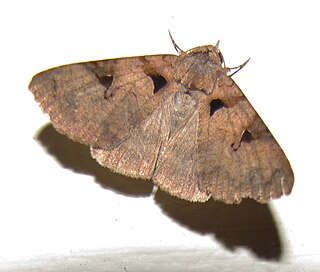
A privet is a flowering plant in the genus Ligustrum. The genus contains about 50 species of erect, deciduous or evergreen shrubs, sometimes forming small or medium-sized trees, native to Europe, north Africa, Asia, many introduced and naturalised in Australasia, where only one species, Ligustrum australianum, extends as a native into Queensland. Some species have become widely naturalized or invasive where introduced. Privet was originally the name for the European semi-evergreen shrub Ligustrum vulgare, and later also for the more reliably evergreen Ligustrum ovalifolium and its hybrid Ligustrum × ibolium used extensively for privacy hedging, though now the name is applied to all members of the genus. The generic name was applied by Pliny the Elder to L. vulgare. It is often suggested that the name privet is related to private, but the OED states that there is no evidence to support this.

Pseudargyrotoza conwagana is a moth of the family Tortricidae found in Asia and Europe. It was first described by the Danish entomologists, Johan Christian Fabricius in 1775.

Palpita vitrealis, common name jasmine moth or white pearl, is a species of moth of the family Crambidae.

Palpita is a genus of moths of the family Crambidae. Members of the moth genus Stemorrhages may be very similar in appearance.

Stemorrhages is a genus of moths of the family Crambidae described by Julius Lederer in 1863. Members of the moth genus Palpita may be very similar.
Amata annulata is a species of moth of the subfamily Arctiinae first described by Johan Christian Fabricius in 1775. It is found in Australia, New Guinea and the Philippines.

Speiredonia mutabilis is a species of moth of the family Erebidae first described by Johan Christian Fabricius in 1794. It is found in India, Sri Lanka, Vietnam, Taiwan, the Philippines, from Sundaland eastwards to Australia, the Solomon Islands, New Caledonia, Vanuatu, Fiji and Tonga.

Avatha discolor is a species of moth of the family Erebidae. It is found from the Indo-Australian and Pacific tropics to as far east as Henderson Island.

Hypocala deflorata is a moth of the family Erebidae. It was first described by Johan Christian Fabricius in 1794. It is widespread from India, Sri Lanka to Africa and to Australia and many Pacific islands. Records include China, Borneo, Queensland, Vanuatu, New Caledonia, Rotuma, Fiji, Samoa, Hawaii, Norfolk Island and New Zealand.

Simplicia cornicalis is a litter moth of the family Erebidae. The species was first described by Johan Christian Fabricius in 1794. It is found in south-eastern Asia and the Pacific. Records include New Caledonia, Réunion, Thailand, Fiji, Hawaii, India, Sri Lanka, the Society Islands, as well as New South Wales and Queensland in Australia. It is an introduced species in southern Florida and Louisiana in the United States.

Palpita nigropunctalis, the lilac pyralid, is a moth of the family Crambidae. It is found in eastern Asia, including China, Taiwan, Korea, Japan and the Russian Far East.

Oraesia emarginata is a species of moth of the family Erebidae first described by Johan Christian Fabricius in 1794. It is found in Australia, New Caledonia, Indonesia, New Guinea, Pakistan, the Philippines, India, Sri Lanka, Sulawesi, Taiwan, China, Japan, Korea and Nepal as well as Eritrea, Ethiopia, Kenya, Namibia, Nigeria, South Africa, Tanzania, the Gambia, Uganda, Oman and Yemen.

Diaphania costata, the orange-shouldered sherbet moth or erroneously the white palpita moth, is a moth of the family Crambidae. The species was first described by Johan Christian Fabricius in 1794. It is widely dispersed, being found in the Indomalayan realm, as well as Europe. It is also found in Mexico and Texas, possibly having been introduced accidentally.

Palpita quadristigmalis, the four-spotted palpita moth, is a moth in the family Crambidae. It is found in North America, where it has been recorded from Quebec and Ontario to Florida, west to Arizona and north to Colorado.













